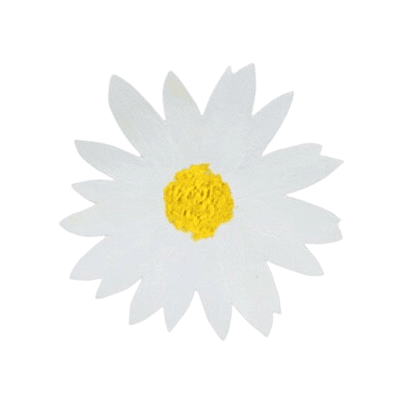Wednesday 26th April 2023
Join us for No Mow May!

“If you only do one thing this year to improve your garden’s value for nature cut your grass less, or not at all,” says our very own Sarah Mead, creator of the Yeo Valley Organic Garden. “Come on gardeners, would a little less cutting really be such a bad thing?!”
The UK’s climate is perfectly suited to allow grass and the many species of beneficial plants that share our lawns to thrive, but regular cutting deprives essential pollinators of an important food source. According to PlantLife, the British conservation charity behind the No Mow May initiative, allowing your lawn to grow naturally for just a single month can provide enough nectar for ten times the number of bees and other pollinators than a regularly cut lawn. In fact, the average lawn produced enough nectar each day to support 1088 honeybees!
Sarah continues, “Global biodiversity is in decline and our climate is warming. It’s essential that we all recognise the small changes we can make that have a huge collective impact on our environment. Putting your feet up instead of getting the mower out is top of the list!”
The Yeo Valley Organic Garden is supporting PlantLife’s No Mow May challenge again this year and taking part in the charity’s Every Flower Counts campaign. The garden team will be showing, not only throughout the month but also the rest of the year, how less cutting not only improves your lawn’s value for nature but can also provide a fun and cheap way to add more interest to your garden’s design. In the Yeo Valley Organic Garden, 2/3 of the grass will not be mowed at all, leaving only the heavy footfall areas regularly trimmed. In addition, all garden tools, including mowers, are now powered electronically, eliminating the need for fossil fuels and making garden maintenance quieter for both people and wildlife.
You’re only FIVE steps away from a wildlife rich lawn:
Give your lawn an early spring trim to tidy up winter growth and then decide which parts of your lawn you can comfortably allow to grow long in 2022.
Why not turn over some of your existing lawn to annual meadows instead. At YOG we had two areas of formal lawn that are now a riot of low maintenance colour every year. We took the decision to strip the turf off (composting it down for later use in potting mixes) and sow an annual flower mix instead. The resulting carpet of blooms attracts mases of pollinators and flowers nonstop from June until October, with absolutely no effort from us!
Alternatively, you could introduce spring bulbs and/or plug plants into existing grass to make the most of your new ‘no mow’ area. Also, if you have lovely early flowers blooming in your grass you certainly won’t be wanting to mow it. Good candidates are crocus tommasinianus, narcissus, cowslips and if you have a wet area camassias - All of which have finished flowering by the end of June when you can mow over them – if you must!
Commit to only cutting the areas you need to keep short, for example for ease of movement around the garden and children’s ball games
Try cutting a trail or maze into your longer grass and listen to the buzz of pollinators as you wander through
Sarah’s inspirational, seasonal planting and sympathetic design offer great ideas for how to choose organic principles in your own garden while enjoying year-round colour and form. So why not come and see?
Our garden gates are open to visitors for the season, click here to find out more!
Photo credit: Studio Whisk










